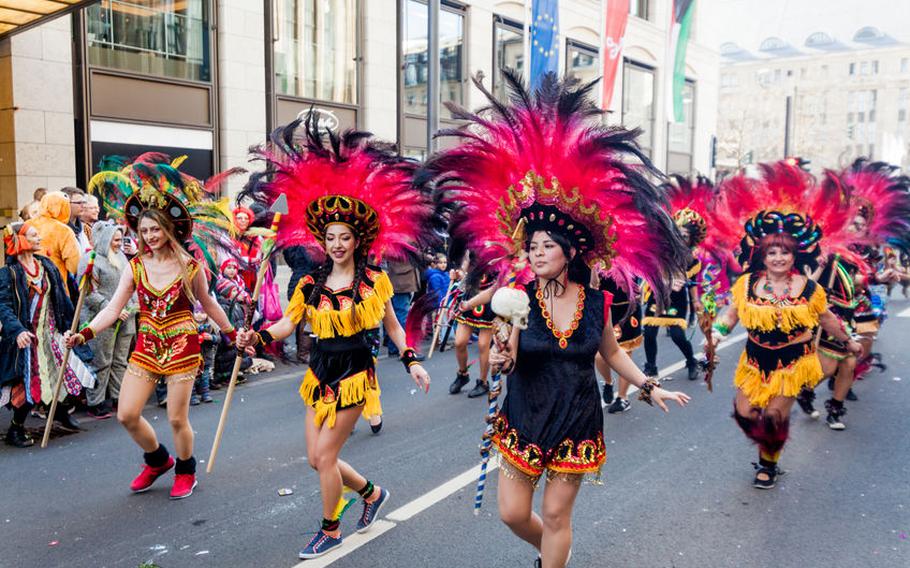Lifestyle
Germany's traditions: Fasching
Stripes Europe February 2, 2023

Fasching parade © ewastudio | 123rf.com ()
Stroll through a German grocery store or market in February, and at first glance – it looks as if both Halloween and Valentine’s Day are being celebrated together.
Three-pronged jester’s hats jingle against gingerbread hearts, little pink candy pigs made of marzipan offer four-leaf clovers and the world’s latest political leaders are parodied in caricature masks. This seasonal mismatch can only mean one thing; it’s carnival season in Germany, also known as Fasching!
The History
In many Christian-based faiths, parishioners observe a 40-day period prior to Easter, called “Lent”. It’s a time of introspection, repentance and fasting. An impending period of fasting and restriction can only be offset in one way: celebrate as much as possible before the sobriety of Lent begins!
Roman paganism was a superstitious time where evil spirits had to be scared away with masks and fires. This inspired the use of costumes and masks during celebrations!
Let’s Party!
The season actually begins Nov. 11, at 11:11 a.m. The precise date and time stems from a strong anti-French sentiment following the French Revolution. France ruled under the motto, “Equality, Liberty, Fraternity.” Germans simply took the first letter of each motto’s values, to spell Elf, or the number 11 in German. Hence celebrations begin on the eleventh day of the eleventh month, at 11:11 a.m., naturally.
If you didn’t start partying in November, not to worry! There are six days devoted to carnival celebrations.
Thursday: The Thursday before Ash Wednesday serves as an unofficial holiday in many regions of Germany. You’ll see it called Fat (Fett), Greasy (Schmotziger) or Nonsensical (Unsinniger) Thursday. Women will cut neckties from men, but reward them with a kiss.
Friday: On Sooty Friday (Russiger Freitag), TV stations broadcast several “Royal” Fasching programs.
Saturday: Carnation Saturday (Nelkensamstagi) or Greasy Saturday (Schmalziger Samstag) is traditionally a day of smaller parades with costumed spectators.
Sunday: The “biggest” carnival parades are held Sunday or Monday, depending on the region. Southern regions celebrating Fasching, use Tulip Sunday (Tulpensonntag) for their largest parades, notably Munich and Würzburg.
Monday: Northern regions celebrating Karneval designate Rose Monday (Rosenmontag) for their parades, most notably Cologne. Fit in with the locals by donning masks or costumes – and don’t forget a bag for candy and trinkets tossed from the parade floats!
Tuesday: The last days of revelry are coming to a close on Shrove Tuesday, (Fasnachtsdienstag). The evening is often marked with gorgeous masquerade balls, where attendees unveil their masks at midnight. Bonfires are also common, and straw figurines are tossed into the flames to burn away sins committed during carnival.
No matter which way you choose to celebrate it, the beauty of Germany’s “fifth season” beams with cultural richness. Brave the crowds to catch parade candy, waltz your way through a masquerade, watch the colorful festivities from home on television, or join the locals and party in the streets – there truly is no wrong way to enjoy carnival!